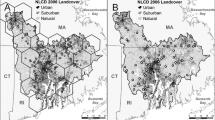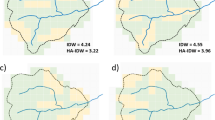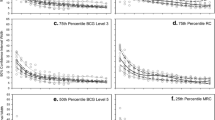Abstract
Large areas of public lands administered by the Bureau of Land Management and located in arid regions of the southwestern United States are being considered for the development of utility-scale solar energy facilities. Land-disturbing activities in these desert, alluvium-filled valleys have the potential to adversely affect the hydrologic and ecologic functions of ephemeral streams. Regulation and management of ephemeral streams typically falls under a spectrum of federal, state, and local programs, but scientifically based guidelines for protecting ephemeral streams with respect to land-development activities are largely nonexistent. This study developed an assessment approach for quantifying the sensitivity to land disturbance of ephemeral stream reaches located in proposed solar energy zones (SEZs). The ephemeral stream assessment approach used publicly-available geospatial data on hydrology, topography, surficial geology, and soil characteristics, as well as high-resolution aerial imagery. These datasets were used to inform a professional judgment-based score index of potential land disturbance impacts on selected critical functions of ephemeral streams, including flow and sediment conveyance, ecological habitat value, and groundwater recharge. The total sensitivity scores (sum of scores for the critical stream functions of flow and sediment conveyance, ecological habitats, and groundwater recharge) were used to identify highly sensitive stream reaches to inform decisions on developable areas in SEZs. Total sensitivity scores typically reflected the scores of the individual stream functions; some exceptions pertain to groundwater recharge and ecological habitats. The primary limitations of this assessment approach were the lack of high-resolution identification of ephemeral stream channels in the existing National Hydrography Dataset, and the lack of mechanistic processes describing potential impacts on ephemeral stream functions at the watershed scale. The primary strength of this assessment approach is that it allows watershed-scale planning for low-impact development in arid ecosystems; the qualitative scoring of potential impacts can also be adjusted to accommodate new geospatial data, and to allow for expert and stakeholder input into decisions regarding the identification and potential avoidance of highly sensitive stream reaches.









Similar content being viewed by others
References
Alluvial Fan Task Force (2010). The integrated approach for sustainable development of alluvial fans. Final documents of the alluvial fan task force. http://aftf.csusb.edu/.
Archer, S.R., & Predick, K.I. (2008). Climate change and ecosystems of the southwestern United States. Rangelands, 30(3), 23–28. doi:10.2111/1551-501.
Armstrong, A., Stedman, R.C., Bishop, J.A., Sullivan, P.J. (2012). Whats a stream without water? Disproportionality in headwater regions impacting water quality. Environmental Management, 50(5), 849–860. doi:10.1007/s00267-012-9928-0.
Belnap, J., Welter, J.R., Grimm, N.B., Barger, N., Ludwig, J.A. (2005). Linkages between microbial and hydrologic processes in arid and semiarid watersheds. Ecology, 86(2), 298–307. doi:10.1890/03-0567.
Blasch, K., Ferr, T.P., Hoffmann, J., Pool, D., Bailey, M., Cordova, J. (2004). Processes controlling recharge beneath ephemeral streams in Southern Arizona. In: F.M. Phillips, J. Hogan, B. Scanlon (Eds.), Groundwater Recharge in A Desert Environment: The Southwestern United States(pp. 69–76). Washington, DC: American Geophysical Union. doi:10.1029/009WSA05.
BLM (2012). Approved Resource Management Plan Amendments. Record of Decision (ROD) for Solar Energy Development in Six Southwestern States, Bureau of Land Management. http://solareis.anl.gov/documents/docs/Solar_PEIS_ROD.pdf.
BLM, D.O.E. (2012). Final programmatic environmental impact statement (PEIS) for solar energy development in six southwestern states. FES 12-24, DOE/EIS-0403, Bureau of Land Management and U.S. Department of Energy, http://solareis.anl.gov/documents/fpeis/index.cfm.
Bowen, E.E., Hamada, Y., O’Connor, B.L. (2014). Mapping mountain front recharge areas in arid watersheds based on a digital elevation model and land cover types. Journal of Water Resources and Protection, 6, 756–771. doi: 10.4236/jwarp.2014.68072
Brady, R.H., Vyverberg, K.A., Thibodeaux-Yost, S. (2013). Developing a protocol to describe and delineate episodic stream processes on arid landscapes for permitting solar power plants. Abstracts with Programs - Geological Society of America, 45(6), 54.
Caruso, B.S. (2011). Science and policy integration issues for stream and wetland jurisdictional determinations in a semi-arid region of the western US. Wetlands Ecology and Management, 19(4), 351–371. doi:10.1007/s11273-011-9221-7.
Caruso, B.S., & Haynes, J. (2011). Biophysical-regulatory classification and profiling of streams across management units and ecoregions. Journal of the American Water Resources Association, 47(2), 386–407. doi: 10.1111/j.1752-1688.2010.00522.x.
CDFW (2013). Lake and Streambed Alteration Program. http://www.dfg.ca.gov/habcon/1600/.
Chin, A., & Gregory, K.J. (2001). Urbanization and adjustment of ephemeral stream channels. Annals of the Association of American Geographers, 91(4), 595–608. doi:10.1111/0004-5608.00260.
Duniway, M.C., & Herrick, J.E. (2011). Disentangling road network impacts: the need for a holistic approach. Journal of Soil and Water Conservation, 66, 31A–36A. doi:10.2489/jswc.66.2.31A.
EPA (2008). Clean water act jurisdiction following the U.S. Supreme Court’s Decision in Rapanos v. United States & Carabell v.United States. Clean Water Act Jurisdiction Guidance Document, US Environmental Protection Agency. http://water.epa.gov/lawsregs/guidance/wetlands/CWAwaters.cfm.
EPA (2014). Waters of the United States Proposed Rule. http://www2.epa.gov/uswaters.
Field, J.J., & Lichvar, R.W. (2007). Review and synopsis of natural and human controls on fluvial channel processes in the arid west. ERDC/CRREL TR-07-16, U.S. Army Corps of Engineers, Cold Regions Research and Engineering Laboratory.
Finnveden, G., Nilsson, M., Johansson, J., Persson, A., Moberg, A., Carlsson, T. (2003). Strategic environmental assessment methodologies and applications within the energy sector. Environmental Impact Assessment Review, 23(1), 91–123. doi:10.1016/S0195-9255(02)00089-6.
Fritz, K.M., Hagenbuch, E., D’Amico, E., Reif, M., Wigington, P.J., Leibowitz, S.G., Comeleo, R.L., Ebersole, J.L., Nadeau, T.L. (2013). Comparing the extent and permanence of headwater streams from two field surveys to values from hydrographic databases and maps. Journal of the American Water Resources Association, 49(4), 867–882. doi:10.1111/jawr.12040.
Graf, W. (1987). Geomorphic systems of north america. centennial special volume 2, Geological Society of America, Boulder, CO.
House, P.K. (2005). Using geology to improve flood hazard management on alluvial fans—an example from Laughlin, Nevada. Journal of the American Water Resources Association, 41, 1431–1447. doi:10.1111/j.1752-1688.2005.tb03810.x.
Izbicki, J.A. (2007). Physical and temporal isolation of mountain headwater streams in the Western Mojave Desert, southern California. Journal of the American Water Resources Association, 43(1), 26–40. doi:10.1111/j.1752-1688.2007.00004.x.
Karr, J.R. (1991). Biological integrity: a long-neglected aspect of water resource management. Ecological Applications, 1(1), 66–84.
Kaufmann, P.R., Levine, P., Robison, E.G., Seeliger, C., Peck, D.V. (1999). Quantifying physical habitat in Wadeable Streams. EPA/620/R-99/003, US. Research Triangle Park, NC: Environmental Protection Agency.
Leu, M., Hanser, S.E., Knick, S.T. (2008). The human footprint in the west: a large-scale analysis of anthropogenic impacts. Ecological Applications, 18(5), 1119–1139. doi:10.1890/07-0480.1.
Levick, L.R., Goodrich, D.C., Hernandez, M., Fonseca, J., Semmens, D.J., Stromberg, J., Tluczek, M., Leidy, R.A., Scianni, M., Guertin, D.P., Kepner, W.G. (2008). The ecological and hydrological significance of ephemeral and intermittent streams in the arid and semi-arid American Southwest. EPA/600/R-08/134, ARS/233046, U.S. Environmental Protection Agency and USDA/ARS Southwest Watershed Research Center, Washington, DC.
Linkov, I., Loney, D., Cormier, S., Satterstrom, F.K., Bridges, T. (2009). Weight-of-evidence evaluation in environmental assessment: review of qualitative and quantitative approaches. Science of The Total Environment, 407(19), 5199–5205. doi:10.1016/j.scitotenv.2009.05.004.
Mayo, A.L., Davey, A., Christiansen, D. (2007). Groundwater flow patterns in the San Luis Valley, Colorado, USA revisited: an evaluation of solute and isotopic data. Hydrogeology Journal, 15, 383–408. doi:10.1007/s10040-006-0079-3.
Merritt, D.M., & Wohl, E.E. (2003). Downstream hydraulic geometry and channel adjustment during a flood along an ephemeral, arid-region drainage. Geomorphology, 52(3-4), 165–180. doi:10.1016/S0169-555X(02)00241-6.
Moran, M.S., Emmerich, W.E., Goodrich D.C., Heilman, P., Holifield Collins, C.D., Keefer, T.O., Nearing, M.A., Nichols, M.H., Renard, K.G., Scott, R.L., Smith, J.R., Stone, J.J., Unkrich, C.L. , Wong, J. (2008). Preface to special section on fifty years of research and data collection: US Department of Agriculture Walnut Gulch Experimental Watershed. Water Resources Research, 44(5), W05S01. doi:10.1029/2007WR006083.
Nadeau, T.L., & Rains, M.C. (2007). Hydrological connectivity between headwater streams and downstream waters: how science can inform policy. Journal of the American Water Resources Association, 43(1), 118–133. doi:10.1111/j.1752-1688.2007.00010.x.
Nanson, G.C., Tooth, S., Knighton, A.D. (2002). A Global perspective on dryland rivers: perceptions, misconceptions and distinctions In L.J. Bull & M.J. Kirkby (Eds.), Dryland rivers: Hydrology and geomorphology of semi-arid channels (pp. 17–54, chap. 2). West Sussex, England: Wiley.
Nichols, K.K., & Bierman, P.R. (2001). Fifty-four years of ephemeral channel response to two years of intense World War II military activity, Camp Iron Mountain, Mojave Desert, California. Reviews in Engineering Geology, 14, 123–136.
NRC (1996). Alluvial fan flooding. Committee on alluvial fan flooding report. National Research Council.
NRCS (2012). Soil Survey Geographic Database (SSURGO). URL http://soildatamart.nrcs.usda.gov.
Poff, N.L. (1996). A hydrogeography of unregulated streams in the United States and an examination of scale-dependence in some hydrological descriptors. Freshwater Biology, 36, 71–91.
Pool, D.R. (2005). Variations in climate and ephemeral channel recharge in southeastern Arizona, United States. Water Resources Research, 41(11), W11,403. doi:10.1029/2004WR003255.
Robins, C.R., Buck, B.J., Williams, A.J., Morton, J.L., House, P.K., Howell, M.S., Yonovitz, M.L. (2009). Comparison of flood hazard assessments on desert piedmonts and playas: a case study in Ivanpah Valley, Nevada. Geomorphology, 103, 520–532. doi:10.1016/j.geomorph.2008.07.020.
Sandercock, P.J., Hooke, J.M., Mant, J.M. (2007). Vegetation in dryland river channels and its interaction with fluvial processes. Progress In Physical Geography, 31(2), 107–129. doi:10.1177/0309133307076106.
Shaw, J.R., & Cooper, D.J. (2008). Linkages among watersheds, stream reaches, and riparian vegetation in dryland ephemeral stream networks. Journal of Hydrology, 350(1–2), 68–82. doi:10.1016/j.jhydrol.2007.11.030.
Somerville, D., & Pruitt, B. (2004). Physical stream assessment: A review of selected protocols for use in the clean water act section 404 program. Order No. 3W-0503-NATX, U.S. Environmental Protection Agency, Washington D.C.
Steward, A.L., von Schiller, D., Tockner, K., Marshall, J.C., Bunn, S.E. (2012). When the river runs dry: human and ecological values of dry riverbeds. Frontiers in Ecology and the Environment, 10, 202–209. doi:10.1890/110136.
Stonestrom, D.A., Constantz, J., Ferr, T.P., Leake, S.A. (2007). Ground-water recharge in the arid and semiarid southwestern United States. Professional Paper 1703. Reston, VA: US Geological Survey.
Suter, G.W., & Cormier, S.M. (2011). Why and how to combine evidence in environmental assessments: weighing evidence and building cases. Science of The Total Environment, 409(8), 1406–1417. doi:10.1016/j.scitotenv.2010.12.029.
Tooth, S. (2000). Process, form and change in dryland rivers: a review of recent research. Earth-science Reviews, 51(1–4), 67–107. doi:10.1016/S0012-8252(00)00014-3.
Tou, J.T., & Gonzalez, R.C. (1974). Pattern recognition principles. Massachusetts: Addison-Wesley Publishing Company.
Turnbull, L., Wainwright, J., Brazier, R.E. (2008). A conceptual framework for understanding semi-arid land degradation: ecohydrological interactions across multiple-space and time scales. Ecohydrology, 1(1), 23–34. doi:10.1002/eco.4.
USACE, & EPA (2014). Definition of Waters of the United States Under the Clean Water Act; Proposed Rule. In: Federal Register, vol 79, no. 76, National Archives and Records Administration, pp 22,188–22,274.
USGS (2012a). National geologic map database, surficial geology of the United States. http://ngmdb.usgs.gov/ngmdb/ngmdb_home.html.
USGS (2012b). National hydrography dataset (NHD). URL http://nhd.usgs.gov.
Webb, R.H., & Leake, S.A. (2006). Ground-water surface-water interactions and long-term change in riverine riparian vegetation in the southwestern United States. Journal of Hydrology, 320, 302–323. doi:10.1016/j.jhydrol.2005.07.022
Weed, D.L. (2005). Weight of evidence: a review fo concepts and methods. Risk Analysis, 25(6), 1545–1557. doi:10.1111/j.1539-6924.2005.00699.x.
Wilson, J.L., & Guan, H. (2004). Mountain-block hydrology and mountain-front recharge In F.M. Phillips, J. Hogan, B. Scanlon (Eds.), Groundwater recharge in a desert environment: The Southwestern United States (pp. 113–138). Washington, DC: American Geophysical Union. doi:10.1029/WS009.
Wohl, E., Cooper, D., Poff, L., Rahel, F., Staley, D., Winters, D. (2007). Assessment of stream ecosystem function and sensitivity in the Bighorn National Forest, Wyoming. Environmental Management, 40, 284–302.
Acknowledgements
Funding for this project was supported by the US Department of the Interior, Bureau of Land Management, under interagency agreement, through US Department of Energy contract DE-AC02-06CH11357. We would also like to thank two anonymous reviewers for comments that improved the quality of this manuscript.
Author information
Authors and Affiliations
Corresponding author
Rights and permissions
About this article
Cite this article
O’Connor, B.L., Hamada, Y., Bowen, E.E. et al. Quantifying the sensitivity of ephemeral streams to land disturbance activities in arid ecosystems at the watershed scale. Environ Monit Assess 186, 7075–7095 (2014). https://doi.org/10.1007/s10661-014-3912-5
Received:
Accepted:
Published:
Issue Date:
DOI: https://doi.org/10.1007/s10661-014-3912-5




